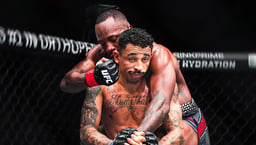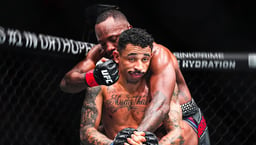
Issue 079
September 2011
Ten tales from the mouths of the guys who were actually there when the s**t went down
It’s great to see fighters respected as professionals and MMA treated as a sport, but it’s worth remembering that it wasn’t always like that. To bring the sport to its current heights, warriors of the past had a hard time. Before vale tudo was transformed into MMA in 1993, there were more than 50 years of stories in the streets of Brazil. In this, the Brazil issue, we invited Marcelo Alonso, one of Brazil’s leading MMA writers, to revisit eight chapters that marked vale tudo history during the ‘80s and ‘90s.
Part 1: Jiu-jitsu vs. Luta livre
Chapter 1: Rickson answers luta livre
In 1988, five years after Rickson Gracie had once again proven jiu-jitsu to be the best fighting style in Brazil, with his second victory over Rei Zulu at Rio’s Maracanãzinho Stadium, the country’s Muay Thai and luta livre teams were growing stronger.
Talk that Rickson, the Gracie family’s most revered competitor, would soon move to the US to help his brother Rorion in the challenges and exhibitions against champions there where rife. For at least five decades no group had yet found the courage to confront the Gracie family’s supremacy. But on the beaches, streets and in the discos of Rio de Janeiro, rumors circulated that Marco Ruas and other cross-training fighters, such as Hugo Duarte and Denilson Maia, were greatly improving both in grappling skill (luta livre) and striking (Muay Thai). “There were rumors that Marco Ruas would challenge Rickson. The luta livre fighters started getting bold and the atmosphere got really tense in the city,” recalls Fábio Gurgel, at that time at the purple belt level in jiu-jitsu under Romero Jacaré.

As Rickson was on leaving at the start of 1989, he decided to straighten out the situation, putting a stop to all the rumors. First he went with Helio, his father and spiritual leader of Gracie jiu-jitsu, in June 1988 to Boqueirão Academy, then the ‘temple’ of luta livre. It was a busy day at the academy, with more than 20 professionals under Carlos Brunocila’s leadership. Helio approached Marco Ruas and asked what his intentions were. Ruas said he did not want to challenge Helio, but if Rickson challenged him he would like four months to train. “I will not challenge anybody. I’m here to fight with people who like fighting,” Rickson said. Hugo Duarte immediately replied: “I want to fight. Put my name on your list. In three months I will be ready.” When Gracie heard that, he replied: “There is no list. Who wants to fight? I’m here to fight! If anyone disagrees, they’d better shut up and just listen.” Rickson soon departed and his rivals remained quiet.
Chapter 2: Vale Tudo at Pepê Beach
If Rickson solved his problem with Ruas, he acquired a new enemy in Hugo Duarte. His new foe was far heavier than Ruas and now heralded as luta livre’s top representative in Rio. After the incident at Boqueirão, Hugo started to spread the word that he was training to fight against the Gracie family. “Everybody was tired of the Gracies’ attitude of invading academies just to prove their superiority,” says Hugo. “We were in greater number, not afraid of conflicts and anywhere we were, the jiu-jitsu guys stayed away. For the first time in history, jiu-jitsu started to respect other kinds of fighting.”
Three months before leaving Brazil, Rickson accepted that the only way to control the situation was by forcing a public fight with Hugo. At that time Gracie was told by his cousins Renzo and Ryan Gracie that Hugo and the luta livre fighters had been spotted a number of times lately on Pepê Beach in Barra da Tijuca, which was just a few meters from Gracie’s Academy in Barra. With that information, Rickson calmly waited for his cousins’ call. One sunny day, it came. This time Rickson would meet his enemy in a much less auspicious place for a vale tudo fight: on the sand of the most crowded beach in the city.
As soon as he arrived at Pepê Beach, Rickson did not offer any choices to his rival and went in his direction and, since it had been three months, asked him if he was ready. He then slapped his rival’s face. Calmly, Hugo took off his T-shirt and the fight started. Gracie had some difficulties to take Hugo down in the beginning, but as soon as he did, he mounted him, grabbed one of his arms and punched him until a luta livre representative asked him to stop. While the jiu-jitsu leader was declared the victor, the luta livre icon swore that the war was far from ending. “It was a trap,” protests Duarte. “They planned everything! When I arrived at the beach there were already 40 jiu-jitsu guys waiting for me. During the fight, they started throwing sand in my eyes, so I could not see anything. I don’t consider that a fight among two men and I told [Rickson] to be ready to fight me under the same conditions.”
Chapter 3: The Invasion of Gracie Academy
Six days after the event on Pepê Beach, Hugo kept his word and, at 8pm, invaded Gracie Academy, which was based on the third floor of Padre Antonio Vieira School, in the Humaitá neighborhood. “Gracie Academy had always invaded other academies, but this time we gave them a little surprise. We were getting our revenge for what they had done to us at Pepê Beach,” says Duarte, who arrived with more than 50 people only to discover Rickson wasn’t there. “Helio Gracie welcomed us and I told him I was there to fight with his son. The old man quickly called him,” says Hugo. Minutes later Rickson arrived on the back seat of his friend’s motorcycle wearing a jock strap. He was scared because of the number of luta livre guys that were waiting for him at the front door.
“There was a big uproar! There were more than 100 of his guys and there were probably also criminals among the fighters, as I saw some people carrying guns,” Gracie recalled. Rickson pulled Hugo aside for a private word and told him that he respected Duarte as a man because Hugo wanted revenge against him. He said he would accept the fight even without prior warning, but that it should be done with respect and that nobody could touch, interrupt or invade the fight before it finished. His rival guaranteed that the fight would be only between the two of them.
Helio Gracie formed a circle on the cement courtyard at the school’s entrance and the fight started. The roar of the crowd drew a lot of attention from neighbors, who quickly came to their windows to see what was happening unaware they had a front-row seat to one of the most famous fights vale tudo history.
This time, the fight was brief. Rickson quickly took Hugo to the ground, mounted him and unleashed punches until he asked Gracie to stop. By now the neighbors were in a panic and had already called the police, but there was still time for another fight. Eugênio Tadeu and Royler Gracie had been having disagreements since 1983 when Royler’s partner Renan Pitanguy fought Eugênio. But, before a punch was thrown, police arrived...
Chapter 4: Eugênio vs. Royler
With unfinished business between Royler and Eugênio due to the police interruption, Rickson went to Eugênio’s academy four days later to propose a restart. “Rickson was at the front door of my house with his son and said that he needed to solve a problem before he traveled to the US. He wanted a fight between me and his brother Royler, and I agreed,” said Tadeu, who went to Rickson’s academy with some fighters the following day.
At 1pm the fight took place below the third-floor Gracie Academy. It lasted a marathon 50 minutes, and ended with no winner. Eugênio had started leading, but soon Royler stole the momentum. After 18 minutes, Eugênio suggested finishing the fight with the score tied, but Rickson did not accept. After 32 minutes both men had become exhausted and the action had ground to a halt. Rickson stopped the fight and called it a tie. A few days later, in January of 1989, Rickson moved permanently to Los Angeles.
Part 2: Chute Boxe vs. Brazilian Top Team
Chapter 5: Vitor Belfort vs. Wanderlei Silva
The first chapter of the long, historic rivalry between Brazilian Top Team and Chute Boxe happened at UFC: Ultimate Brazil on October 16th 1998, when all BTT members where still representing Carlson Gracie Team. Then, Carlson Team had names like Vitor Belfort, Wallid Ismail, Murilo Bustamante, Carlos Barreto, Allan Góes, Mario Sperry and Amaury Bitetti and was considered Brazil’s most powerful gym, respected in all MMA events. By the other hand, a new team from Paraná state – famous for having great Muay Thai fighters – was starting to grow with amazing exhibitions of its two stars, Pelé Landi Jons and Wanderlei Silva. The pair had been knocking out all their opponents in IVC, the biggest Brazilian vale tudo event at that time.
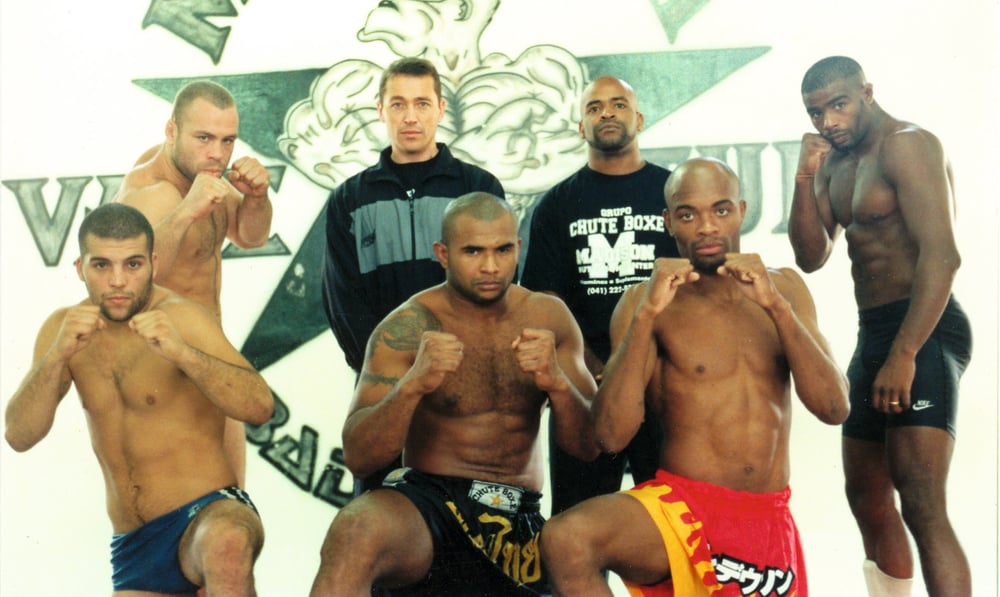
When Frank Shamrock declined to face Vitor Belfort at UFC: Ultimate Brazil, the promoters decided to invite IVC champion ‘Vanderlei Silva’ to take his place (at that time his name was not spelt with a ‘W’). Silva had already knocked out American wrestler Mike Van Arsdale in the IVC setting him up to face the golden boy ‘Phenom.’
During the official press conference Landi, Silva and the entire Chute Boxe crew ensured they brought IVC’s notoriously ‘tense’ climate to the UFC. “I’m going to knock him out in less than five minutes,” promised Wanderlei. The tension only escalated when Chute Boxe members, led by Pelé Landi, bumped into the Carlson Team members. “They brought back the rivalry we used to have with luta livre in the ‘80s,” remembers Bebeo Duarte, at that time part of Belfort’s corner.
Already hugely popular in Brazil by the time of the fight, Belfort knocked out the IVC champion in, officially, just over 40 seconds, prompting an audience of almost 4,000 people to go totally insane. “Jiu-jitsu, jiu-jitsu, jiu-jitsu,” they chanted. The first KO defeat of Wanderlei Silva can be remembered as the first chapter in the long history of rivalry and respect between both schools.
Chapter 6: Almost Friends?
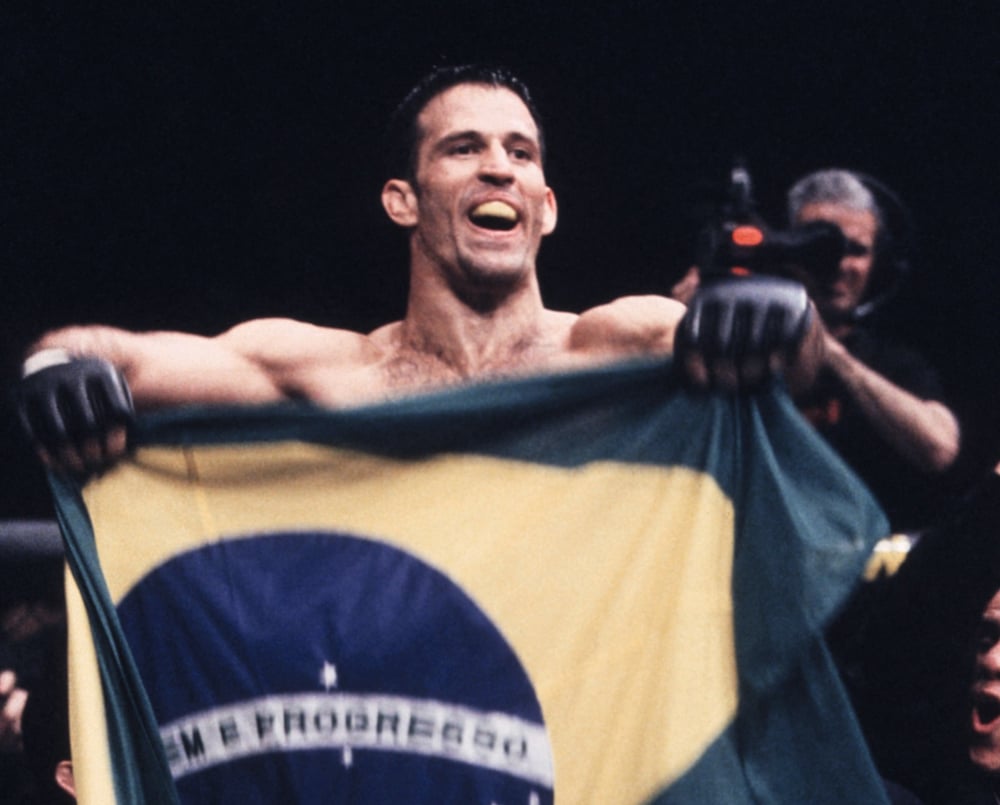
Less than two years after UFC: Ultimate Brazil, at UFC 25 in Japan in April 2000, Carlson Gracie and the Chute Boxe team almost became friends. “Wanderlei was going to fight Tito Ortiz and I was going to fight Yoji Anjo,” recalls Murilo Bustmante, then one of Carlson Gracie’s top pupils. “We shared the same locker room and we helped each other to warm up. I remember that Ricardo Liborio even showed some guard positions to Wanderlei. The climate was really good.” Even though Bustamante would go on to be victorious that evening, shortly after returning home Carlson Gracie expelled him from the academy. Subsequently, a few days later, Mario Sperry, Bebeo Duarte and Murlio Bustamante (now all ex-Carlson team members) founded Brazilian Top Team.
Chapter 7: War over breakfast
One year after the break up with master Carlson and the founding of the new Brazilian Top Team, the ex-Carlson Gracie charges had their first serious problem with Chute Boxe. The location? The remarkably anodyne breakfast room of the Tokyo Hilton Hotel before Pride 16 in September 2001.
One day earlier, Mario Sperry was asked by BTT manager, Motoko Ushida, to train (specially for a photo session) with Norihisa Yamamoto who was scheduled to fight with the Chute Boxe fighter Assuério Silva at the event. “Actually it was more like a photo session for a magazine,” recalls Sperry. “But I still thought it would be better to tell Rudimar Fedrigo.” Sperry decided to talk to Fedrigo during the breakfast the next morning. However, Rudimar did not appreciate the stance of the BTT coaches. “We are Brazilians, I couldn’t accept their attitude of training an opponent to face our fighter. When I returned to my table I told that to my fighters and prohibited them to talk to any BTT members,” recalls Fedrigo.
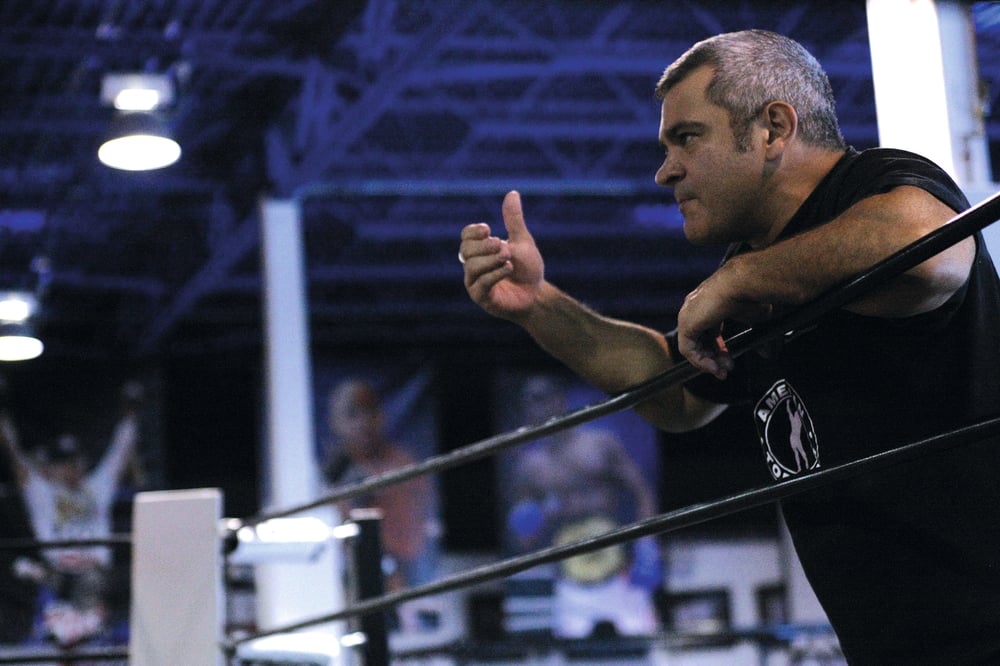
Moments later Ricardo Arona, who didn’t know anything about what happened, entered the breakfast room with Ricardo Liborio, Sperry and Luis Alves (Muay Thai coach). Back in 1998 when the heat between BTT and Chute Boxe members had begun, Arona was just a tough kid who’d won his first world title at purple belt. Liborio says: “Arona approached Wanderei and says, ‘Hey, hello man.’ And Wanderlei just didn’t answer. So Arona asks him again, ‘Hey, man. What’s up, how are you?’ And Wanderlei still didn’t really answer. So on the third occassion, Wanderlei shouts at him, ‘Hey, get the f**k away. Why are you in my face?’
Everybody was kind of shocked and couldn’t understand what had happened, and those two almost got into it right there, at the breakfast table in the morning, and I was in the middle of them.”
“From that point on I started to have a personal problem with Wanderlei,” remembers Arona. Then a few days later, in a long interview with Tatame magazine, Rudimar declared war on Brazilian Top Team. “I think they are jealous for Chute Boxe’s projection in Pride. I told Pride promoters that from now on I don’t see any problem in facing their representatives in the Pride ring.” BTT answered in an open letter in the magazine’s following edition: “We believe that Rudimar Fedrigo’s statements are not good for the growth of our sport. Regarding the war declaration we would like to say that during 10 years our team proved in events all over the globe that we can face any kind of opponents and we will never change.”
Seven months later, Japanese fans would see Mario Sperry face Murilo ‘Ninja’ Rua at Pride 20. Perhaps the most intense chapter of this rivalry’s history.
Chapter 8: Ninja vs. Sperry
After the declaration of war, both teams trained hard to solve their problems inside the ring – and at Pride 20 that is exactly what happened. Very well prepared Sperry and Ninja brought to the ring all the rivalry between both teams in a historic fight. However, the same cannot be said about the behavior of the corners, who were locked in a verbal war. ‘Minotauro’ Nogueira, Arona and Luis Alves in one corner, Pelé, Rafael Cordeiro and Rudimar Fedrigo in the other. The foul language and complete disrespect would later see Minotauro break down into tears. “I didn’t cry because Sperry lost, even why the fight was tough, but because of the lack of respect from the Chute Boxe members,” Rodrigo admitted. “This is sport, they could not insult us with such bad words like they did.” The trash talking was so bad and course that Brazilian cable TV had to turn down the sound during transmission.
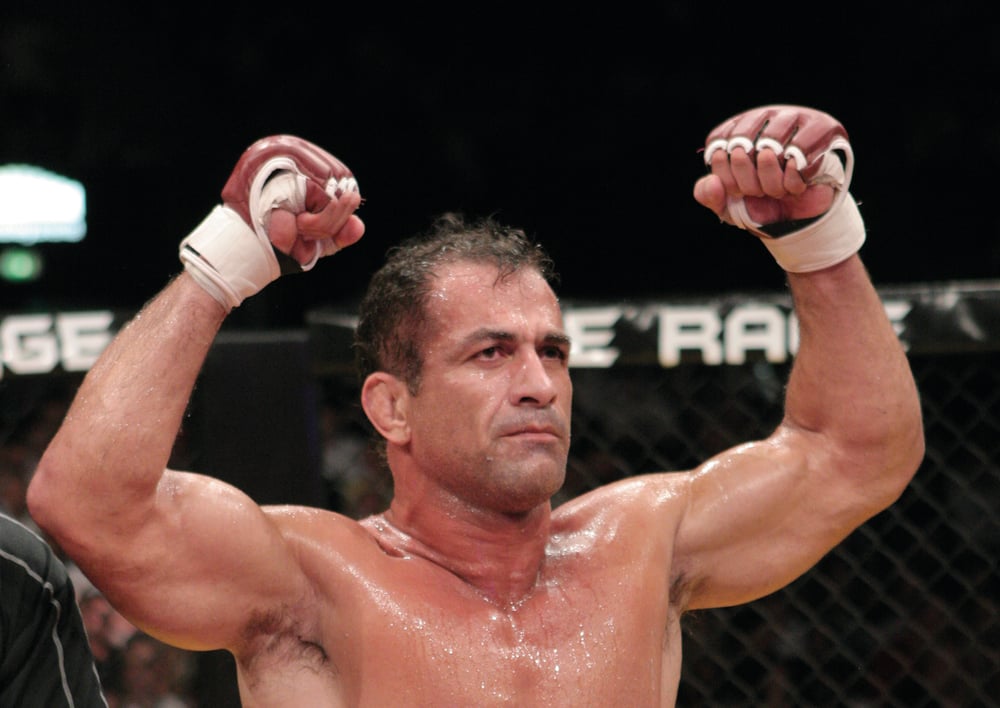
Bebeo Duarte recalls: “I’ll never forget about this episode. Few people know about it, but right after the Sperry vs Ninja fight, some members of BTT (Arona, Rogério and Alex Negão) were so upset that they wanted to invade the Chute Boxe locker room (where Wanderlei was warming up to fight). Me and Luis Alves had a hard time trying to calm them down. Everybody was really revolted about the Chute Boxe attitude in the corner.”
At the most explosive point of the war, the leadership of Mario Sperry was critical in bringing back the peace between both teams. Even after his loss to Ninja, Sperry went to the Chute Boxe locker room to compliment all the members for the win. “I just wanted to show them that we could be opponents without being enemies,” remembers Sperry. His attitude was the first step to seal the peace.
“I see Mario’s attitude as a turning point in the relationship of both teams,” acknowledges Rafael Cordeiro, trainer of the team. Actually, a few weeks after Pride 20, Pelé Landy left Chute Boxe and the war turned into much more of a professional rivalry.
At Pride 23 in November 2003, when Arona fought Ninja, the climate had totally changed. Besides Mario’s attitude, Rudimar, as promoter of MECA (the biggest Brazilian MMA event) also needed to have a good relationship with BTT. “We had to recognize that BTT and Chute Boxe are the biggest teams. The biggest event in Brazil needed to have confrontation between the strongest powers of Brazil,” explains Rudimar, who today maintains a totally professional working relationship with the BTT team.
Meanwhile, on the plane back from Tokyo to Sao Paulo, returning from Pride 24, another fine gesture from Mario revitalized the relationship. Murilo Ninja got a serious injury, around his eye, during the fight against Kevin Randleman. Sperry talked to the flight captain and managed to get Ninja moved into first class. Rudimar, Rafael and Wanderlei recognized the change in attitude from Sperry and, from that point on, there was no more negativity. “Today I frequently call Sperry and Bebeo to request their fighters. The BTT and Chute Boxe rivalry will always be enormous but now it’s only for the ring,” Fedrigo adds.
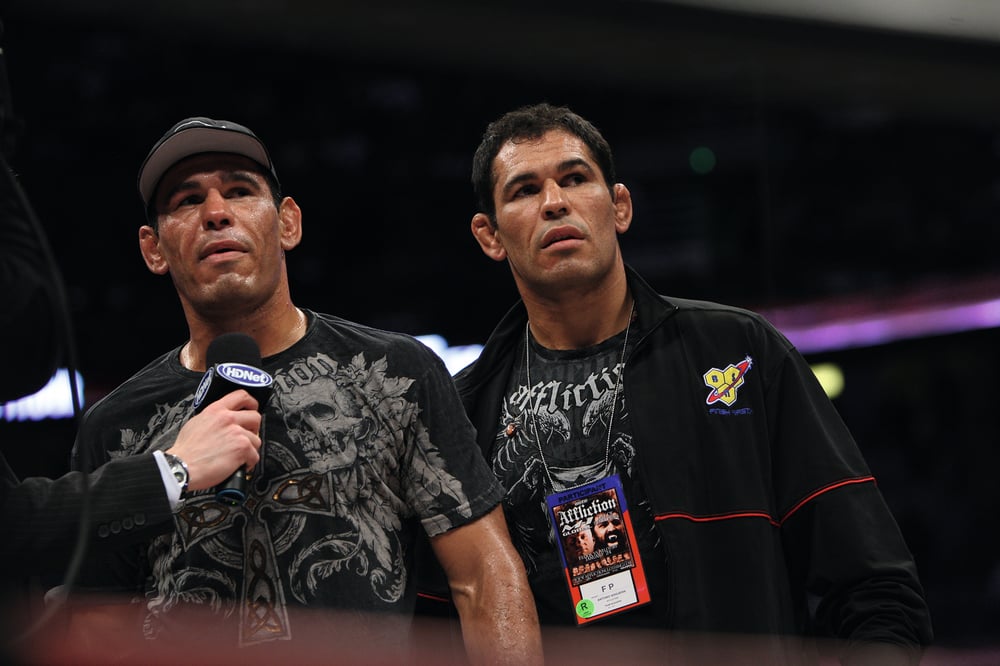
Lil Nog
Rogerio: “We went to Japan at the end of 2004 and Rodrigo was fighting Fedor in the final of the Pride heavyweight grand prix. Their fight was the last one of the night, it was on almost at midnight, so Rodrigo says to me, ‘I don’t want to go now,’ at like 1pm with the bus, he wanted to go later, at like 5pm. So I said to him, ‘I will go now as I want to see the first fights also.’ So he stays back in the hotel, but after I left with the bus it started to snow – a lot. Like a blizzard. So Rodrigo is now stuck, he can’t get out of the hotel and the roads are blocked.
“Back at the venue it’s now 5pm and it’s time for the opening ceremony, to show off the main fighters, and get them all down to the ring. And at that time it was so competitive, it was like K-1 and Pride fighters together. Plus it was New Year’s Eve, and this was the most important fight of the year. It was a huge event. So the time is close and the Pride promoters they come to me and say, ‘Right you have to go in Rodrigo’s place.’ And I said to them, ‘No I can’t. They are going to recognize that it is me.’ But they said I had to do it. So I put on a hoodie and walked to the ring as Rodrigo.
“I even got into the ring and shook Fedor’s hand. I was staring at him and he was staring back at me and I think he was thinking, ‘This is going to be a war.’ Rodrigo didn’t actually make it to the venue until around one hour before their fight, but when he did I said to him, ‘If you didn’t make it I was going to definitely fight this guy, then we could split the money 50-50.’ But he said I would only get 20% so he fought him. And he put up a real good fight too.”
Wanderlei
Wanderlei Silva reveals the true story, first hand, behind his famous slugfest with ‘Shogun’ for ownership of a puppy.
Wanderlei: “Shogun had a beautiful pitbull and one day I asked him, ‘Please can I have a puppy?’ He said, ‘Okay, no problem,’ and the next week he gave me a beautiful puppy. Seven days later he turned to me and said, ‘Man, that’s $100. And a hundred bucks is cheap, no?’ So I said, ‘OK, I’ll pay.’ But I thought, well he’s my friend I don’t really have to pay. Then the next week he said, ‘Man, you need to pay for the dog.’ And again I was like, ‘OK, OK.’ Another week later he said, ‘Just give me two bags of food for the dogs as payment.’ And again I was just like, ‘OK,’ but I was never going to pay for the bags. Another week later we were doing some boxing sparring, in training, and we decide to go at it to decide on the money for the dog. I said to him, ‘If you knock down me, I will pay you the $100. If I knock you down, I don’t have to pay.’ He said, ‘OK.’ We touch gloves and then bang, bang, boff – the dog is mine. Shogun says it was a joke, but it was no joke, it was real. I’d never knocked him down before but on that day I guess the dog was destined to stay with me.”
...

